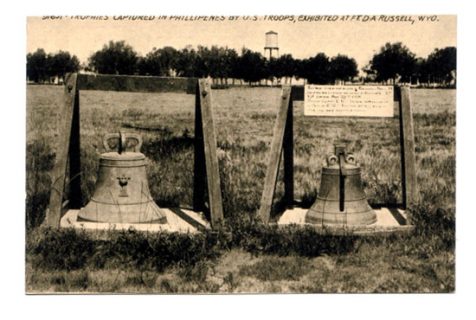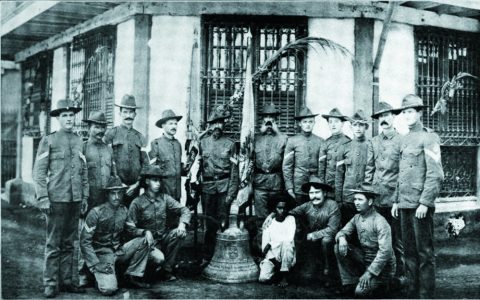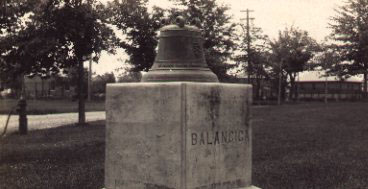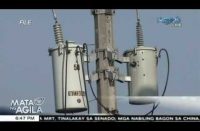
(Eagle News) – “Give us back those Balangiga bells. They are ours. They belong to the Philippines. They are part of our national heritage.”
Thus did President Rodrigo Duterte make his demand to the United States government to return the Balangiga church bells taken by the US forces in 1901 as a war booty during the Philippine American war.
The President referred to the historical pain attached to the Balangiga Bells which were taken by the US forces after killing what historians estimated as around 50,000 Filipinos aged 10 and above in Samar in 1901.
“Isauli naman ninyo. Masakit yun sa amin,” he stressed referring to the Balangiga bells during his two-hour State of the Nation Address on Monday, July 24.

One of those in the audience in Congress yesterday was US ambassador to the Philippines Sung Kim who was born in South Korea where one of the Balangiga bells are located, particularly at the 9th Infantry Regiment at Camp Red Cloud in their base in that country.
The three church bells were taken by the American forces after killing Filipinos aged and 10 and above in the island province of Samar in reprisal for the surprise attack made by Filipino freedom fighters from Balangiga against Company C of the 9th U.S. Infantry Regiment on September 28, 1901.
The Filipino guerillas killed 48 US soldiers and wounded 22 of the 78 men of the unit.

In retaliation, US General Jacob Smith ordered that Samar be turned into a “howling wilderness” wherein all Filipino males aged 10 and above who are capable of bearing arms to be shot and killed. Historians estimated the Filipinos killed in this reprisal to be about 50,000.
President Duterte had earlier hit the Americans before for their massacre of Filipinos in Balangiga in September last year. On Monday, during his second SONA, he again recalled the massacre by the US troops.
US massacre of Balangiga: a historical pain for the Philippines
“At this point, allow me to take a step back in time, in 1901. In 1901, there was known as Balangiga, and that is Eastern Samar. It was the time for Philippine-American War,” he said.
“A combined group of Filipino villagers and guerrillas, in an effort to defend Samar Island from the alien invaders, attacked and overwhelmed a US – a United States infantry garrison. Forty-eight American officers and men were slain in the attack. On the Filipino side, the casualty count was twenty-eight killed and twenty-two wounded.”
“In retaliation, US gunboats and patrols were sent to Balangiga, Samar with the order to ‘make a desert of Balangiga’ and to reduce Samar Island into an island of ‘howling wilderness,’ where every male citizen from the age of 10 and above, and capable of bearing arms, would be put to death. The church bells of Balangiga were seized by the Americans as spoils of war,” Duterte said in his two-hour SONA.

The President said that the bells were “reminders of the gallantry and heroism of our forebears who resisted the American colonizers and sacrificed their lives in the process.”
Duterte called on the US government to return the Balangiga bells immediately.
“Isauli naman ninyo. Masakit yun sa amin.”
One of the bells is in the possession of the 9th Infantry Regiment at Camp Red Cloud in their base in South Korea. The two others are on a former base of the 11th Infantry Regiment at F.E. Warren Air Force Base in Cheyenne, Wyoming.
The US forces took the bells as “war spoils” because one of the bells had tolled to signal the surprise attack by the Filipino guerillas on the American forces.
Previous attempts to seek bells’ return
The Philippine government had previously sought the return of the Balangiga bells to no avail.
It was in the mid-1990s during the term of former President Fidel Ramos who first attempted to initiate recovery of the bells during the administration of former US President Bill Clinton.
But the US government then insisted the bells were US government property, saying it would take an act of Congress to return them.
In 2002, the Philippine Senate approved Senate Resolution no. 393 authored by Aquilino Pimentel Jr., urging the administration of former President Gloria Macapagal-Arroyo to undertake formal negotiations with the US for the bells’ return.
On January 13, 2005, United States Congressman Bob Filner had introduced H.Res.313, urging the President to authorize the transfer of ownership of one of the bells to the Philippines. But the resolution died on January 3, 2007, with the sine die adjournment of the 109th US Congress
In September 2006, US Rep. Filner along with other US congressmen Dana Rohrabacher and Ed Case co-sponsored House Concurrent Resolution No. 481 urging the president of the United States to authorize the return of the church bells. But again the resolution was not acted upon with the adjournment of the 110th US Congress on January 3, 2009.
In October 2007, Senator Manny Villar, during the 14th Philippine Congress, filed Senate Resolution No. 177 which expresses “the sense of the Senate for the return to the Philippines of the Balangiga Bells which were taken by the US troops from the town of Balangiga, Province of Samar in 1901.”
But up to now, the bells remain under the US government’s control.







